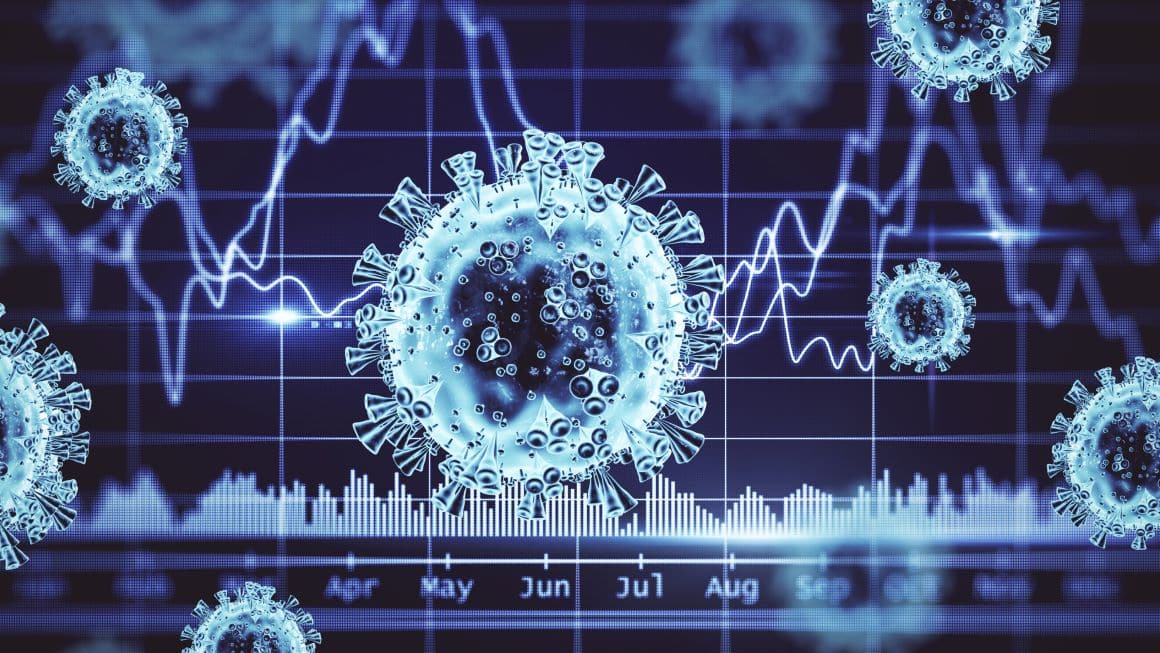I’ve just been shouting at an eminent medic (he couldn’t hear me – he was on TV) for saying he had ‘validated’ Chinese antibody kits by using them on a handful of staff and comparing the results with a more sensitive PCR test. I have no idea how good a physician he is but he clearly bunked off all his statistics lectures.
Everyone, it seems, is banging on the need for mass antibody testing to see who’s had it or has immunity, and it’s been suggested ‘immunity passports‘ are the way forward. And it’s an appealing notion.
The problem is using antibody tests in this way will lead to many, many, many more deaths.
I’ve written before about different ways to test for coronavirus and many would argue the only feasible route to mass testing is a finger prick antibody test. I don’t want to get into the weeds of immunology in this post, the point is:
If you can measure the specific IgG antibody raised against – say – this coronavirus, you can tell if someone has been exposed and is likely immune. And IgG is the one you can detect waaaaay after you’ve recovered. (IgM is the one that turns up first in an infection then wanes as the infection does).
I also don’t want to get into “how much long-term immunity do you get to this coronavirus” – that’s a different and complex question. Bear with me here and just accept:
So, if we can accurately test for IgG we can make a pretty good guess if someone is immune and therefore can go back to work without putting themselves or others at risk.
So far so simple. But it’s biology. It’s fucking complicated. I’ve told you that before. Lots. Keep up, FFS.
Sensitivity and Specificity
The problem is these tests aren’t 100% accurate. But what does that mean?
And just for clarity I’m talking about the antibody tests that look like a pregnancy piss stick, not a full-blown ELISA.
For those you need a lab and people like me, just as you do for the more accurate RT-PCR referenced in the last post.
The problem here is false positives and false negatives. Or, to put it a bit more proper-er:
Obviously – just like any diagnostic test – false positive and false negatives are not good. You don’t want to be telling people that they’re sick if they’re not, or that they’re fine if they’ve got something potentially serious.
In medicine this can have dramatic consequences either way. With COVID-19, at one end you’re isolating people for longer than necessary – it’s the other end that scares the fuck out of me.
Here’s why.
Let’s say you have a diagnostic test with 95% sensitivity and 95% specificity, and whatever you’re testing for infects / affects / may be present in 1% of the population.
95%. Would you take those odds when trusting a test? Sounds pretty good, huh?
Here’s the problem. If you’re looking for something present in 1% of the population, and your test is 95% sensitive and 95% specific, 84% of all positive test results will be false.
WTAF? How does that work? This is where we need to get Bayesian.
Bayes' Theorem
Take a deep breath and bear with me here. This isn’t complicated, it’s just really counterintuitive.
Forget the 500 poor sods who think they’re fine when they’re not, let me stress again if you divide 49k into [49k plus the 9.5k you’ve picked up in the test who ARE infected], that’s how you get to 84% of positive tests being false.
So in the case of COVID, were we to go down the road of ‘immunity passports’ or whatever based on an IgG test, we would have an awful lot of people thinking they’re ‘safe’ because they’ve tested positive – but in fact they’re an army of Typhoid Mary clones still able to contract or spread COVID.
This is clearly a really, really bad idea.
Current Antibody Tests
OK, let’s look at some actual numbers. Below I’ve plugged in the data for one of the better IgG tests currently available. The Cellex test has a sensitivity of 93.8% and a specificity of 95.6%. I’ve put those in but you can play with the numbers all you want and see what comes out.
Using the above real-life percentages, if 1% of the population has or has had COVID, 82% of positive antibody tests will be false.
Side issue is we don’t know how many people have had it so my fag packet is: 12,000 UK deaths with (say) 5% Case Fatality Rate (estimates vary, BMJ recently said 0.66%) – means 12,000 ÷ 5% = 240,000 cases in a population of 66m = 0.36%. Add in care home deaths and a fudge factor – let’s call it 1%.
I’ve pre-populated the fields below with those values – but you can put in whatever floats your boat and it will do the analysis for you as many times as you want. It’s actually pretty cool…
Try It...
You can use the tool above to analyse many probabilities.
Any Bayesian analysis is very dependent on the run rate of what you’re looking for; For example:
So, if the numbers uninfected in a population outweigh those infected you get huge inaccuracies.
False Positives - 95% Specificity
Anyway, back to our knitting.
What This Means
Let’s park the question of how long IgG-mediated immunity to this coronavirus may last. Let’s just assume it does.
The issue arises when people test positive for the antibody and then assume they’re fine to go back to ‘normal’ life (if that is even still a thing now).
Because of Bayesian statistics, if people use the antibody test alone to assume they have had CoV and are therefore immune – and so allow themselves to cease measures preventing the spread, many people will die.
Again, this isn’t because assumptions about long-term immunity might be wrong, it’s how statistics work. There are sensitivities and nuances to this. Obviously.
I’m not saying these tests have no utility. Yes, the PCR is far more accurate and there’s now a very cool point-of-care isothermal test that takes five minutes – but I can’t see this lending itself to mass testing on the scale required – at least not on its own. In terms of their predictive value for individuals, if used with a view to issuing ‘immunity passports’ it’s not just that they’re about as much use as tits on a nun, they’re actually dangerous for the reasons above.
Where I think these tests – even at the current sensitivity and specificity levels – do have benefit are at a population level. You could get a pretty precise estimate within narrow confidence intervals of how many people in a population have had the disease with a few tens of thousands of tests.
The problem is, because folks is dumb, and as a species we’re rubbish with stats, telling people they’re going to be tested but can’t have their personal result would likely be a very tough political sell…





This is a terrific writeup of an issue I’ve been trying to get people to pay attention to with little avail.
And we are, indeed, drowning in a sea of bullshit.
Assume my policy of becoming the second Julian of Norwich may still be the answer then – collecting bricks at the mo – no we’ve both kept as “isolated” as possible whilst the experts continue to try to pass this whole nightmare off as some temporary once off – not a repeat of the black death which kept resurfacing ……
Or am I just out of my depth as usual ?
Tony Taylor never be a one off, be every Yr, soon as cold and flu season comes, be lock in
Given its mode of spread (you can shed it while asymptomatic or oligosymptomatic) I think it’ll be another seasonal pain in the arse until we develop some herd immunity or a vaccine. And that depends on whether the antibodies are against a bit of the virus that doesn’t mutate much…
Wendy Goodall thanks for cheering me up/down 😣😣😣😣😣😣😣😣😣
I’ve heard there’s 3 mutations now going about.
Gonzini Gonz There are hundreds of genetic variations now circulating (see https://nextstrain.org/ncov/global), with most being more virulent than the original (as expected given Louis Pasteur’s theory about the evolution of virulence during “serial passing” being a function of hygiene – extra virulence only stops giving a strain an advantage when it makes people sick so quickly that they don’t have time to infect others); but there are very few mutations to the spike proteins indicating that such mutations put strains at a big disadvantageous compared to strains with conserved spike proteins. Successful natural antibodies invariably target the spike proteins so, at least for vaccines which raise such antibodies, if the virus does mutate to escape detection by such antibodies it will probably have lower virulence – perhaps to the point where it is relatively harmless. On the other hand, sometimes mutations of viruses not only evade neutralisation by antibodies but actually piggy-back on the antibodies to produce a much worse infection (Dengue haemorrhagic fever for example). A lot can go wrong on the hunt for a vaccine.
Media keep pushing and pushing for tests!!!!
Seems like the author might be concerned their job is at risk. 🤔🤔🤔
Get the test correct first. All the Media pushing and pushing for test !!. They have not got a clue what the are talking about. So full of bull💩 i have switched off. Mike Graham at 10am worth a listen to 📻📻🎧
There is an assumption from the outset of 1% that could be wrong! Anything following could be bogus as well!!
Well only way to get them bio chips in US, by vaccine
Nah, tracking nanobots in the chemtrails, innit.
The is nothing safe and secure about the gate plan for the total vaccination of the world population it’s downright evil despicable fear mongering to the extreme
Eugenics and depopulation of planet earth are the top agenda of the global elites
The mortality rate is .1 to .3% it is a flu nothing more and we seen how well the flu vaccine got rid of the flu.
Never mandate garbage like this!
there ARE NO EXPERTS, Jokers yes, assholes yes, Liars yes, VIRUS NO! Its a sham, a big fat COUP!. See ya on the “Cattle Trucks”! 🧟♂️🤡😷🤑👹🤥😳🤫🤔✝️😇😎
Can you not write an article without peppering it with bad language? Not very professional
WHO there idea..